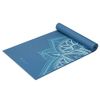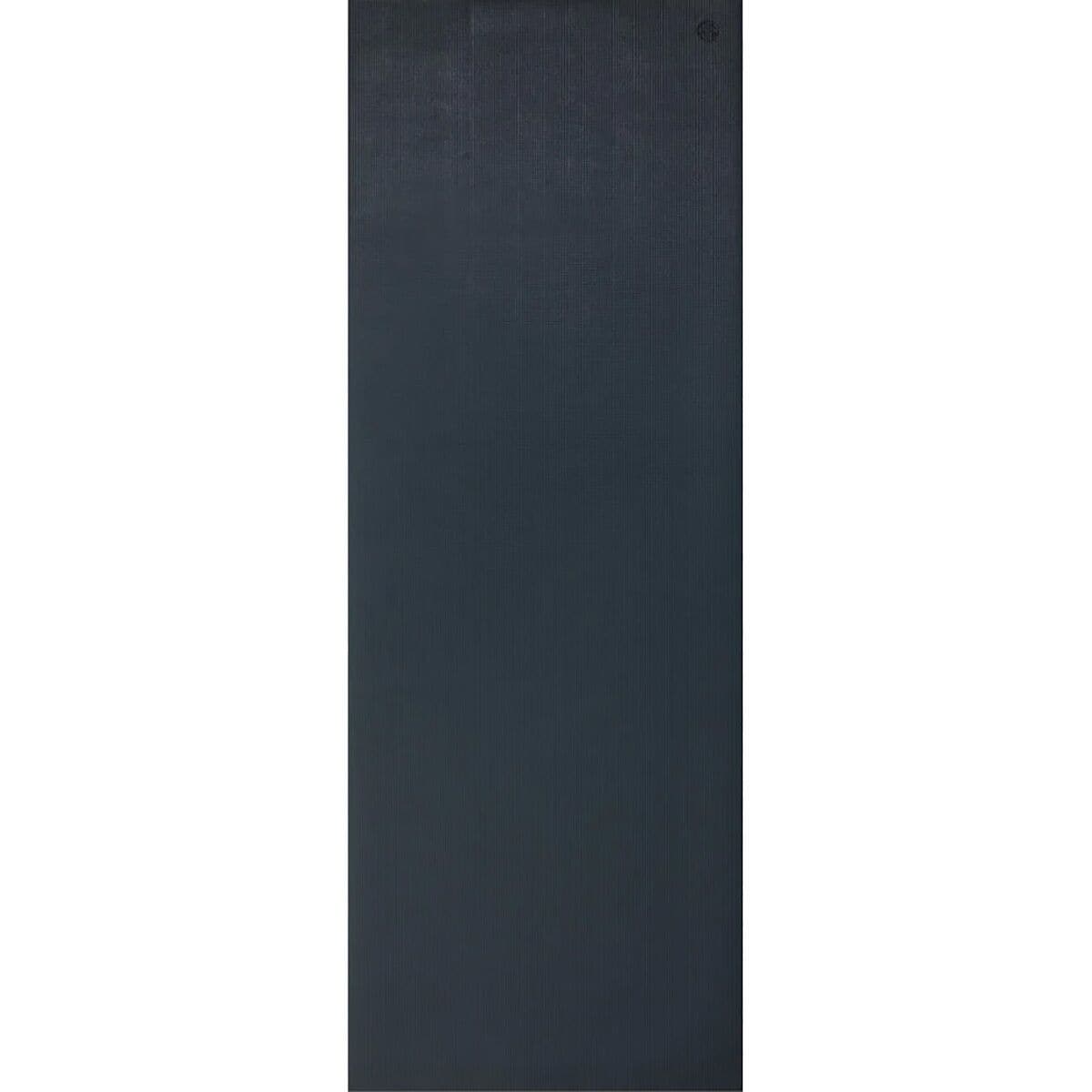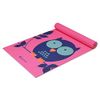
Develop lower body flexibility, build ankle strength and improve range of motion with these three mobility exercises.
Limited lower body range of motion and stiffness, particularly around the ankles, are some of the main reasons people struggle with daily movement and exercises like squats, lunges and stretching. Designed to improve ankle mobility, these moves should release tightness and unlock stiff ankles.
You only need one of the best resistance bands for rehab and a bench or similar to do the routine, which is led by YouTube sensation Tone and Tighten’s Jared, a doctor of physical therapy and rehabilitation.
Performed regularly, each exercise could send you on the way to a healthier, more nimble and mobile body. Here’s how to do each exercise, the benefits and ways to adapt the routine.
Watch Tone and Tighten’s ankle mobility routine
Jared, who uses the exercises himself, says these are five exercises he recommends if you’re returning from injury, require rehabilitation and you’ve been cleared by your physician to begin exercise. But you can also use them if you want to improve mobility and range of motion day-to-day.
As a trainer myself, I see a lot of clients with very limited lower body mobility, which prevents them from reaching their full potential during exercises, like finding depth at the bottom of a squat, performing lunges, trying more advanced moves like the overhead squat, or even just getting up and down from the floor, walking, or climbing.
As we age, our joints, bones, ligaments and muscles all need proper attention to keep us moving functionally. I recommend adding these moves into a short routine that you can do several times a week.
Sign up to get the BEST of Tom's Guide direct to your inbox.
Here at Tom’s Guide our expert editors are committed to bringing you the best news, reviews and guides to help you stay informed and ahead of the curve!
What are the 5 ankle exercises?
Each ankle exercise is demonstrated from least to most “aggressive,” meaning, how intense the exercise might feel. These exercises might feel uncomfortable, but they shouldn’t cause prolonged or sharp pain, so if this happens, stop immediately and seek medical advice for any existing injuries.
1. Ankle ABCs
Learn your ABCs the new way — using your ankles. Jared credits this as a “great active range of motion exercise.”
Focus on drawing the letters as big as you can to maximize your range of motion. Jared recommends repeating for 3 sets per leg, moving the whole way through the alphabet each time.
- Sit on a bench, bed, table, or similar with your legs extended and ankles unsupported off the edge. You could also place cushions or pillows beneath your calves to help elevate the legs
- Using your toes, start writing the capital letters A, B, C, all the way through to Z
- Once you’ve finished on one side, move to the other leg and repeat
2. Seated calf stretch
Tight hamstrings, calves and ankles often walk hand in hand, so stretching the area should release tension down the back of the leg and in the ankle joint.
“You’re in complete control of how much or how little stretch you feel,” Jared says. Meaning you can make this as intense or relaxed as you want. “If you round forward… it puts the hips in a rocked position” reducing the stretch. Instead, sit tall and focus on pulling the foot toward you rather than reaching forward.
- Sit on the edge of a bench, bed, table, or similar with one leg standing on the floor and the other raised and extended on the bench
- Flex the foot of your supported leg, toes pointed toward you
- Wrap a resistance band or a towel around the widest part of your foot
- Using both hands, pull the foot toward you
- Sit tall, finding length through the spine and keeping your chest lifted
- Hold the stretch for 20 seconds, repeat 3 times and remember to switch sides
3. Standing 3-way gastrocnemius stretch
The gastrocnemius and soleus are two of the main muscle groups found in the calves — the soleus is a deeper calf muscle. Sometimes it’s hard to determine which muscles are targeted during calf stretches, as slight adjustments can change the emphasis on the stretch. This one targets the gastrocnemius from three angles.
- Stand with a wall, door, or similar in front of you
- Keeping your chest and hips square to the wall, position your feet hip-width apart, then take a big step back, toes pointed forward
- Bend your front knee and slightly lean forward, maintaining a flat back
- Push against the wall and drive your front knee forward until you feel the stretch in your calf and ankle
- Keep your front heel planted and back leg locked out straight as you send the weight into your front foot. Hold for 20 seconds
- Next, turn your back foot out slightly to 10-15 degrees and hold the stretch. You should feel the inner leg working harder. Hold for 20 seconds
- Turn your back foot inward slightly 10-15 degrees and hold the stretch until you feel the stretch toward the outer leg. Hold for 20 seconds
- Switch legs
- Repeat
4. Standing soleus stretch
This one is similar to the standing 3-way gastrocnemius stretch but with a few modifications to engage different parts of your body.
- Repeat the same steps above with toes pointed forward, but this time, bend the back knee while keeping the back foot planted on the floor
- Hold the stretch for 20 seconds
- Repeat turning the foot outward and inward for 20 seconds per stretch
- Switch legs
- Repeat
5. Ankle joint mobilization
Jared recommends this stretch for anyone who experiences a pinch across the front of the ankle joint, reducing how far forward your lower leg can travel.
- Secure a resistance band around a pole, squat rack, or similar unmoving object
- Step your right foot through the loop of the band, resting the band just above the back of the ankle
- Step back until you create tension through the band
- Kneel down, positioning the right knee behind the right ankle
- Generate a “runner stance” bringing your hands down to frame your front foot and drawing your right knee forward while keeping the right heel planted
- Send your weight forward, hold the stretch for 5 seconds, then lean backward
- Repeat 30 times, 3 sets of 10 reps and remember to switch legs.
As your mobility and range of motion improve, you should begin noticing significant improvements during exercise — whether that involves sitting deeper into your squats or finding it easier to run. Jared recommends adding strength training as you notice improvements, ensuring you build strength in the muscles surrounding the ankles.
More from Tom's Guide
- Ditch the gym — you just need 20 minutes and 1 pair of dumbbells to define your core and develop full body strength
- Develop healthy hips and strengthen your lower body with this 3-move stretching routine
- I tried the new Helio smart ring — 5 things that surprised me about this budget-friendly Oura alternative

Sam Hopes is a level 3 fitness trainer, level 2 reiki practitioner, and senior fitness writer at Tom's Guide. She is also currently undertaking her Yoga For Athletes training course. Sam has written for various fitness brands and websites over the years and has experience across brands at Future such as Live Science, Fit&Well, Coach, and T3. Having worked with fitness studios like F45 and Virgin, Sam now primarily teaches outdoor bootcamps, bodyweight and calisthenics, and kettlebells. She also coaches mobility and stretching-focused classes several times a week and believes that true strength comes from a holistic approach to training your body. Sam is currently in training for her next mixed doubles Hyrox competition in London this year, having completed her first doubles attempt in 1:11.










